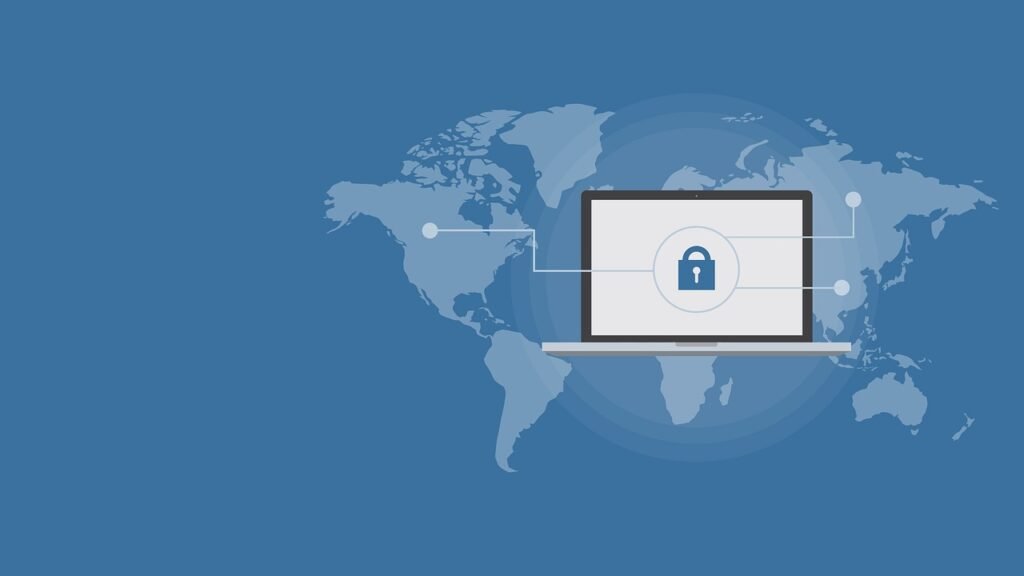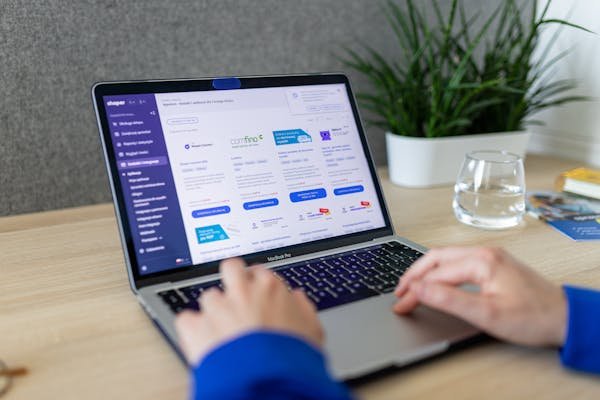Expanding your marketing efforts into emerging markets is an exciting opportunity. These regions often offer untapped audiences, rapid economic growth, and a chance to diversify your brand’s global presence. But with new opportunities come new challenges, especially when it comes to navigating privacy laws. Emerging markets often have privacy regulations that differ from the established frameworks like GDPR in Europe or CCPA in California. Some laws are in early stages, while others are evolving rapidly.
Understanding and adhering to these laws is essential not only for compliance but also for building trust with your new audience. Let’s break down how you can effectively navigate privacy laws in emerging markets while running successful international campaigns.
Why Privacy Laws Matter for International Campaigns
When entering emerging markets, respecting local privacy laws is about more than avoiding fines. It’s about respecting the customers you’re trying to connect with. Privacy laws ensure that your marketing practices align with cultural norms, legal requirements, and the expectations of your audience.
Failing to comply with privacy regulations can have severe consequences, from legal penalties to reputational damage. On the other hand, showing that your brand values privacy can build trust, which is the foundation of long-term customer relationships. In a competitive global market, trust can set you apart from others.
Step 1: Understand the Privacy Landscape in Emerging Markets
Every market has its own set of rules and cultural attitudes toward privacy. Before launching a campaign, take the time to research the legal and cultural landscape.
Research Local Privacy Laws
Start by identifying the specific privacy regulations in the countries you’re targeting. For example:
- Brazil’s LGPD (Lei Geral de Proteção de Dados): Similar to GDPR, it requires clear consent for data collection and robust security measures.
- South Africa’s POPIA (Protection of Personal Information Act): Focuses on the responsible use of personal data, including the right to access and correct information.
- India’s Personal Data Protection Bill: Still evolving but includes provisions for consent, data localization, and penalties for non-compliance.
Each country may have unique requirements, so it’s critical to understand the laws at a granular level. Consulting with local legal experts or compliance professionals can save you time and help you avoid missteps.
Understand Cultural Expectations
In addition to legal frameworks, understand how people in the region view data privacy. In some markets, consumers may have high expectations for transparency and control over their data, while others might prioritize convenience over privacy. Aligning your practices with these cultural expectations makes your campaigns more relatable and trustworthy.
For instance, while a highly detailed consent form might work well in Europe, a simpler approach could resonate better in regions where digital literacy levels vary widely.
Step 2: Build Privacy into Your Campaign Design

Privacy compliance isn’t something to tack on at the end of a campaign—it needs to be baked in from the start. By integrating privacy into your campaign design, you can create strategies that align with both legal requirements and customer expectations.
Use Privacy-First Data Collection
Limit the data you collect to what’s absolutely necessary for your campaign. This approach minimizes risk while showing customers that you respect their privacy.
For example, if you’re running a loyalty program in an emerging market, avoid asking for sensitive information like national ID numbers or income details unless they’re essential. Instead, focus on collecting email addresses, names, and preferences.
Design Transparent Consent Mechanisms
Consent is often a cornerstone of privacy laws, so make it easy for users to understand what they’re agreeing to. Use clear, straightforward language and avoid pre-checked boxes or vague terms.
For instance, when asking users to subscribe to your newsletter, include a short note like, “We’ll use your email to send updates and promotions. You can unsubscribe anytime.” This transparency builds trust and ensures compliance with most privacy regulations.
Step 3: Localize Your Privacy Practices
Localization isn’t just about translating content—it’s about adapting your practices to align with the legal and cultural norms of each market.
Adapt Privacy Policies
Create privacy policies tailored to the specific requirements of each market. Highlight key points that are relevant to local laws, such as data retention periods, cross-border transfers, or user rights.
For example, if you’re operating in Brazil, include a section on how users can request data access or deletion, as required by LGPD. Use simple, accessible language to make the policy easy to understand.
Offer Multilingual Support
Provide your privacy policy and consent forms in local languages. This ensures that users fully understand what they’re agreeing to and reduces the risk of miscommunication.
For instance, if you’re targeting regions with multiple official languages, like India, ensure that your documents are available in Hindi, Tamil, Bengali, and other widely spoken languages.
Step 4: Implement Strong Data Security Measures
Privacy laws often include provisions for data security, requiring businesses to protect user information from breaches and unauthorized access. Strong security measures are essential for compliance and for maintaining customer trust.
Use Encryption and Secure Storage
Encrypt sensitive data both in transit and at rest. This ensures that even if data is intercepted or accessed, it remains unreadable without the proper decryption keys.
For example, if you’re collecting customer data through a web form, use HTTPS to encrypt the connection. Store the data in a secure database with access controls to limit who can view or edit the information.
Regularly Audit Your Systems
Conduct regular audits of your data storage and processing systems to identify vulnerabilities and ensure compliance with local laws. These audits can help you address potential risks before they become problems.
For instance, schedule quarterly reviews of your data handling practices, focusing on how data flows between systems and whether any gaps exist in your security protocols.
Step 5: Manage Cross-Border Data Transfers Responsibly

Many privacy laws in emerging markets have restrictions on transferring data outside the country. Ensuring compliance with these rules is critical when using global platforms or collaborating with international teams.
Understand Localization Requirements
Some countries, like India and China, have data localization laws that require certain types of data to be stored within national borders. Research whether these rules apply to the data you’re collecting and adjust your storage practices accordingly.
For example, if your campaign involves collecting financial data in India, consider using a local cloud provider that complies with data localization requirements.
Use Approved Transfer Mechanisms
When transferring data across borders, use mechanisms that meet the legal standards of the country you’re operating in. Options include Standard Contractual Clauses (SCCs), Binding Corporate Rules (BCRs), or agreements based on adequacy decisions.
For instance, if you’re transferring customer data from Brazil to a server in the U.S., ensure your SCCs explicitly address LGPD’s requirements for cross-border data handling.
Step 6: Educate Your Team on Privacy Compliance
Your team plays a vital role in ensuring privacy compliance. Regular training ensures that everyone involved in your campaigns understands their responsibilities and knows how to handle data appropriately.
Conduct Privacy Training
Train your marketing, sales, and IT teams on the privacy laws relevant to the regions you’re targeting. Include practical examples and scenarios to help them apply what they’ve learned.
For example, if you’re running a campaign in South Africa, train your team on how to handle data access requests under POPIA. This ensures they can respond quickly and correctly if a customer exercises their rights.
Assign a Privacy Champion
Designate someone on your team as a privacy champion to oversee compliance efforts and serve as a point of contact for privacy-related questions. This role ensures accountability and keeps privacy top of mind across your organization.

Related: Check out our free tools:

Step 7: Monitor and Adapt to Regulatory Changes
Privacy laws in emerging markets are often evolving. Staying informed about changes ensures that your campaigns remain compliant and adaptable.
Subscribe to Updates
Follow legal news, industry forums, and government websites for updates on privacy regulations in your target markets. Consider subscribing to newsletters or working with local legal experts to stay ahead of changes.
For instance, if India’s Personal Data Protection Bill is updated, ensure you understand how the changes affect your data collection and processing practices.
Build Flexibility into Your Systems
Design your data handling processes to accommodate changes in privacy laws. For example, use modular systems that allow you to easily update consent forms or storage practices as regulations evolve.
Step 8: Foster Trust Through Transparency
Transparency is a cornerstone of trust, especially when operating in unfamiliar markets. Emerging markets often have consumers who are increasingly aware of their data rights, even if enforcement of privacy laws is still catching up. Being upfront about your data practices can distinguish your brand from competitors.
Clearly Explain Your Data Practices
When collecting data, explain what you’re collecting, why you’re collecting it, and how you’ll use it. Avoid overwhelming users with legal jargon. Instead, use simple, conversational language that resonates with your audience.
For example, if you’re asking for personal details on a sign-up form, include a brief message like:
“We’re collecting your name and email to send you updates about new offers. Your data will never be shared without your permission.”
Providing this clarity reassures users that their information is in good hands.
Give Users Control Over Their Data
Empowering customers to control their data demonstrates respect and builds trust. This includes allowing them to opt out of data collection, update their information, or delete their data entirely.
For instance, create a user-friendly portal where customers can manage their data preferences. Include options like “Update my preferences,” “Download my data,” or “Request data deletion.” This transparency not only helps with compliance but also enhances the user experience.
Step 9: Build Local Partnerships for Better Compliance

Operating in emerging markets often means navigating unfamiliar legal, cultural, and technical landscapes. Partnering with local experts can provide valuable insights and ensure that your practices align with regional norms and regulations.
Collaborate with Local Legal Experts
Engage legal professionals or consultants with expertise in the privacy laws of your target market. They can help you interpret complex regulations, draft compliant privacy policies, and avoid costly mistakes.
For example, a local legal expert in Brazil can guide you through the nuances of LGPD, including how to handle cross-border data transfers and respond to data access requests.
Work with Regional Technology Providers
If data localization is a requirement, partnering with regional cloud or data storage providers can simplify compliance. These providers are often well-versed in local regulations and offer solutions tailored to the market.
For instance, if you’re targeting customers in South Africa, choose a data center within the country that complies with POPIA requirements for data storage and security.
Step 10: Incorporate Privacy in Your Branding
In emerging markets, where trust in international brands can sometimes be shaky, showcasing your commitment to privacy can be a powerful differentiator. Make privacy a part of your brand identity to reinforce your credibility.
Highlight Privacy Commitments in Marketing
Include messages about your privacy practices in your campaigns. For instance, you could emphasize your use of data for personalized experiences while reassuring customers that their information is secure.
An ad might say:
“Your privacy is our priority. We use your data to bring you offers you’ll love—securely and transparently.”
This kind of messaging demonstrates that you value customer trust and are committed to responsible data use.
Share Success Stories
If you’ve successfully navigated privacy challenges in other regions, share these stories to build credibility. Highlighting your proactive approach to privacy can resonate with customers and regulators alike.
For example, publish a case study on how your brand implemented GDPR compliance in Europe and adapted those best practices for emerging markets.
Step 11: Leverage Technology for Compliance
Technology can be your greatest ally in managing complex privacy requirements across multiple markets. By automating compliance tasks and leveraging advanced tools, you can reduce human error and maintain consistency.
Use Consent Management Platforms (CMPs)
A CMP helps you manage user consent across different regions and platforms. It ensures that your data collection practices comply with local laws and gives users control over their preferences.
For instance, a CMP can display region-specific consent forms tailored to the privacy laws of that market, such as LGPD in Brazil or POPIA in South Africa.
Implement Data Governance Tools
Data governance tools help you track, manage, and secure customer data throughout its lifecycle. They provide visibility into how data is collected, stored, and processed, ensuring compliance with regional laws.
For example, a tool like OneTrust or Collibra can help you map data flows, enforce access controls, and generate compliance reports for regulators.
Step 12: Monitor and Measure Your Efforts

Compliance is an ongoing process, not a one-time task. Regularly reviewing and measuring your privacy practices ensures that you stay aligned with evolving regulations and customer expectations.
Conduct Regular Privacy Audits
Schedule periodic audits to evaluate your compliance with privacy laws in each market. Identify gaps, address vulnerabilities, and update your practices as needed.
For instance, review your data storage policies every six months to ensure they meet the latest requirements in countries with data localization laws.
Track Customer Feedback
Pay attention to how customers respond to your privacy practices. Are they engaging with your consent forms? Do they feel informed about how their data is used? Use surveys, reviews, and social media monitoring to gather insights.
For example, if customers frequently ask for more details about your data-sharing practices, consider revising your privacy policy to include clearer explanations.
Step 13: Stay Proactive Amid Changing Regulations
Emerging markets often have privacy laws that are still evolving. Staying proactive and adaptable is essential to ensuring your campaigns remain compliant.
Build a Compliance Roadmap
Create a roadmap that outlines how your organization will adapt to potential regulatory changes. Include contingency plans for updating policies, systems, and processes as new laws are introduced or existing ones are amended.
For example, if India’s Personal Data Protection Bill evolves to include stricter localization requirements, your roadmap should detail how you’ll transition to local data storage providers.
Engage with Industry Groups
Join industry associations and forums focused on privacy and data protection. These groups often provide early insights into regulatory changes and offer a platform for collaboration with other businesses.
For instance, joining the International Association of Privacy Professionals (IAPP) can keep you informed about emerging trends and best practices in data protection.
Conclusion: Privacy Compliance as a Competitive Advantage
Navigating privacy laws in emerging markets might seem complex, but it’s an essential part of running successful international campaigns. Compliance is more than a legal requirement—it’s an opportunity to build trust, demonstrate respect for your audience, and differentiate your brand.
By understanding the privacy landscape, embedding privacy into your campaigns, and staying proactive about regulatory changes, you can turn compliance into a strength rather than a challenge. As you expand into new markets, let your commitment to privacy be a cornerstone of your success.
READ NEXT:
- Are Vanity Metrics Killing Your Marketing Efficiency? Here’s What to Track Instead
- Pinpointing Digital Marketing ROI: Why Your Metrics Aren’t Telling the Full Story
- Unlocking Real ROI in Digital Marketing: The Hidden Costs Draining Your Budget
- How Misaligned Marketing Funnels Are Blocking Your ROI Potential
- Best Digital Marketing Agency In Santa Ana, California
- Best Digital Marketing Agency In San Francisco, California




















